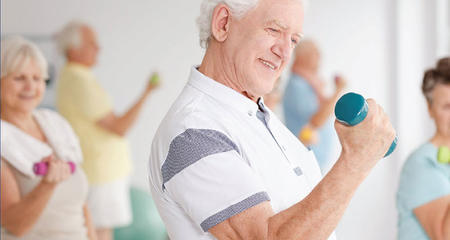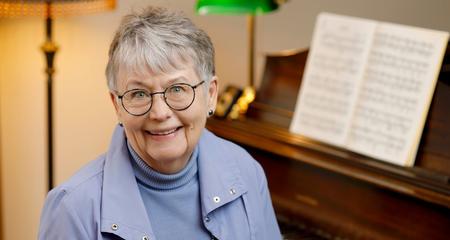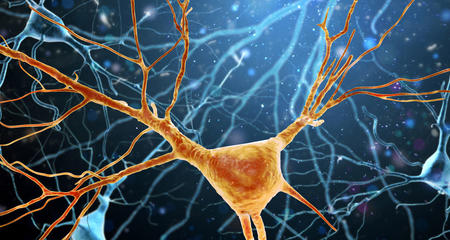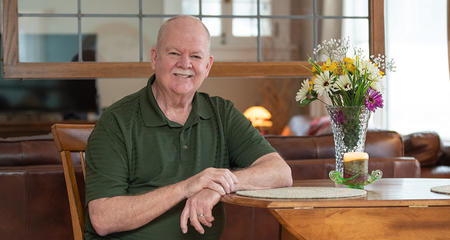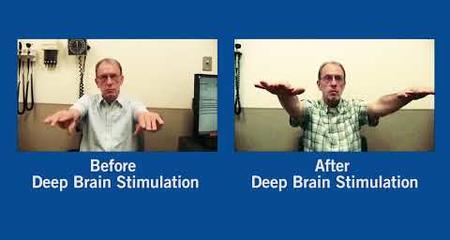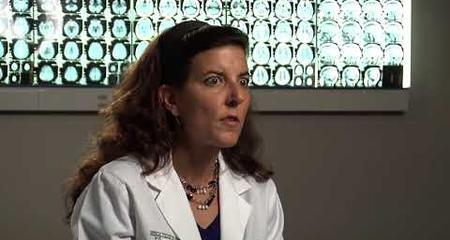Dystonias are disorders that involve involuntary movements and muscle contractions that last for quite a while, resulting in twisting and repetitive movements or abnormal postures. Many cases of generalized dystonias appear to be inherited.
Dystonia symptoms vary and are classified by the part of the body affected:
- Generalized — entire body
- Hemibody — one side
- Focal — one body part
A body part affected by dystonia may also be affected by tremor. This is called dystonic tremor. Symptoms may first appear in childhood, late adolescence or early adulthood.
Types of Dystonias
There are many forms of dystonia. Movements may affect the entire body, a single muscle or a group of muscles. Dystonia is classified by the type of muscles affected such as neck, eyelids, voice and jaw.
Experts with the Parkinson’s Disease and Movement Disorders Program are experienced in treating the many types of dystonias, such as those listed below.
Adult-Onset Dystonia
Adult-onset dystonia begins in adulthood. The Parkinson’s and Movement Disorders Program also treats many people whose dystonia began in childhood.
Dopa-Responsive Dystonia (DRD) / Segawa’s Dystonia
Dopa-responsive dystonia (DRD) / Segawa’s dystonia is a type of dystonia that usually begins in childhood or adolescence with progressive difficulty walking. Symptoms mimic those of cerebral palsy, and spasticity may occur in some cases.
Myoclonus
Myoclonus is a sudden, involuntary and uncontrollable jerking of a muscle or group of muscles. Myclonus occurs in simple forms (e.g., a hiccup) in healthy persons and causes no problems. When more widespread, myoclonus may involve continual and severe muscle contractions. Myoclonic jerking may develop in people with multiple sclerosis, Parkinson’s disease, Alzheimer’s disease, epilepsy or other disorders.
Paroxysmal Kinesigenic Dyskinesia (PKD) and Paroxysmal Nonkinesigenic Dyskinesia (PNKD)
PKD attacks are short, lasting from seconds to 5 minutes, and affect muscles of the arms and legs. Muscles of the face, neck and/or legs and trunk may also be involved. PNKD involves attacks of dystonia or chorea that last from minutes to hours. Attacks may occur daily, or there may be weeks or months between attacks.
Focal Dystonias
Focal dystonias are conditions localized to a part of the body. Examples include:
- Blepharospasm: an abnormal, involuntary blinking or spasm of the eyelids, associated with an abnormal function of the basal ganglia region of the brain. Vision problems may result.
- Cervical dystonia (spasmodic torticollis): dystonia that affects the neck and sometimes shoulders. Muscles in the neck that control the position of the head are affected, causing the head to twist and turn to one side and possibly pull forward or backward. Most people first experience symptoms in middle age. More information is available online from the National Spasmodic Torticollis Association.
- Oromandibular dystonia: continuous spasms of muscles of the face, jaw, pharynx, tongue and, in severe cases, the neck, larynx and respiratory system.
- Spasmodic dysphonia/laryngeal dystonia/vocal dystonia: a voice disorder caused by involuntary movements of muscles of the larynx (voice box). People may have trouble saying a word or two, or they may experience more serious problems communicating. Spasmodic dysphonia causes the voice to break or to have a tight or strained quality.
- Writer’s cramp and other task-specific dystonias: dystonia that occurs as a result of performing specific tasks, such as writing or playing the piano.
Diagnosing Dystonias
No single test confirms the diagnosis of dystonia. Instead, the diagnosis is made after obtaining a complete medical history (including family history) and performing a thorough neurological evaluation. Our movement disorders neurologists are highly skilled at determining a dystonia diagnosis and developing a treatment plan that aligns with your lifestyle and goals.
Dystonia Treatment
As with most treatment plans, we start with medication to treat dystonia.
Deep Brain Stimulation to Treat Dysonia
If your dystonia does not adequately respond to medication, we will consider deep brain stimulation (DBS). You may have dramatic improvement in your symptoms while reducing your medications. We evaluate each patient relative to their lifestyle and treatment goals to determine if DBS is an option.
General qualifications for dystonia treatment with DBS include:
- Symptoms for at least three years
- Symptoms not adequately controlled with medications
- No significant problems with thinking and memory
Learn more about the DBS procedure, programming, risks and frequently asked questions.
Virtual Visits Are Available
Safe and convenient virtual visits by video let you get the care you need via a mobile device, tablet or computer wherever you are. We'll assess your condition and develop a treatment plan right away. To schedule a virtual visit, call 414-777-7700.
More to Explore
